《FUNDAMENTALS OF FLUID MECHANICS FIFTH EDITION》
| 作者 | BRUCE R.MUNSON,DONALD F.YOUNG, 编者 |
|---|---|
| 出版 | JOHN WILEY & SONS,INC. |
| 参考页数 | 792 |
| 出版时间 | 没有确切时间的资料 目录预览 |
| ISBN号 | 无 — 求助条款 |
| PDF编号 | 819628088(仅供预览,未存储实际文件) |
| 求助格式 | 扫描PDF(若分多册发行,每次仅能受理1册) |

1BASIC PROPERTIES OF FLUIDS1
1.1 Some Chaiacteristics of Fluids2
1.2 Dimensions. Dimensional Homogeneity, and Units3
1.2.1 Systems of Units5
1.3 Analysis of Fluid Behavior9
1.4 Measures of Fluid Mass and Weight10
1.4.1 Density10
1.4.2 Specific Weight11
1.4.3 Specific Gravity11
1.5 Ideal Gas Law11
1.6 Viscosity13
1.7 Compressibility of Fluids20
1.7.1 Bulk Modulus20
1.7.2 Compression and Expansion of Gases21
1.7.3 Speed of Sound22
1.8 Vapor Pressure23
1.9 Surface Tension24
1.10 A Brief Look Back in History27
1.11 Chapter Summary and Study Guide29
References30
Review Problems30
Problems31
2FLUIDS ??38
2.1 Pressure at a Point38
2.2 Basic Equation for Pressure Field40
2.3 Pressure Variation in a Fluid at Rest42
2.3.1 Incompressible Fluid42
2.3.2 Compressible Fluid45
2.4 Standard Atmosphere47
2.5 Measurement of Pressure48
2.6 Manometry50
2.6.1 Piezometer Tube50
2.6.2 U-Tube Manometer51
2.6.3 Inclined-Tube Manometer54
2.7 Mechanical and Electronic Pressure Measuring Devices55
2.8 Hydrostatic Force on a Plane Surface57
2.9 Pressure Prism63
2.10 Hydrostatic Force on a Curved Surface67
2.11 Buoyancy, Flotation, and Stability69
2.11.1 Archimedes' Principle69
2.11.2 Stability72
2.12 Pressure Variation in a Fluid with Rigid-Body Motion73
2.12.1 Linear Motion74
2.12.2 Rigid-Body Rotation76
2.13 Chapter Summary and Study Guide78
References79
Review Problems79
Problems79
3FLUIDS IN MOTION-THE BERNOULLI EQUATION94
3.1 Newton's Second Law95
3.2 F = ma along a Streamline97
3.3 F = ma Normal to a Streamline101
3.4 Physical Interpretation104
3.5 Static, Stagnation, Dynamic,and Total Pressure107
3.6 Examples of Use of the Bernoulli Equation112
3.6.1 Free Jets112
3.6.2 Confined Flows114
3.6.3 Flowrate Measurement121
3.7 The Energy Line and the Hydraulic Grade Line125
3.8 Restrictions on Use of the Bernoulli Equation128
3.8.1 Compressibility Effects128
3.8.2 Unsteady Effects131
3.8.3 Rotational Effects133
3.8.4 Other Restrictions134
3.9 Chapter Summary and Study Guide134
References135
Review Problems135
Problems135
4KINEMATICS OF FLUID MOTION150
4.1 The Velocity Field151
4.1.1 Eulerian and Lagrangian Flow Descriptions153
4.1.2 One-, Two-, and Three-Dimensional Flows154
4.1.3 Steady and Unsteady Flows155
4.1.4 Streamlines, Streaklines, and Pathlines156
4.2 The Acceleration Field159
4.2.1 The Material Derivative160
4.2.2 Unsteady Effects162
4.2.3 Convective Effects163
4.2.4 Streamline Coordinates166
4.3 Control Volume and System Representations168
4.4 The Reynolds Transport Theorem170
4.4.1 Derivation of the Reynolds Transport Theorem171
4.4.2 Physical Interpretation177
4.4.3 Relationship to Material Derivative178
4.4.4 Steady Effects178
4.4.5 Unsteady Effects179
4.4.6 Moving Control Volumes180
4.4.7 Selection of a Control Volume182
4.5 Chapter Summary and Study Guide183
References184
Review Problems184
Problems184
5FLOW ANALYSIS USING CONTROL VOLUMES192
5.1 Conservation of Mass—The Continuity Equation193
5.1.1 Derivation of the Continuity Equation193
5.1.2 Fixed, Nondeforming Control Volume195
5.1.3 Moving, Nondeforming Control Volume200
5.1.4 Deforming Control Volume203
5.2 Newton's Second Law—The Linear Momentum and Moment-of-Momentum Equations205
5.2.1 Derivation of the Linear Momentum Equation205
5.2.2 Application of the Linear Momentum Equation206
5.2.3 Derivation of the Moment-of-Momentum Equation221
5.2.4 Application of the Moment-of-Momentum Equation223
5.3 First Law of Thermodynamics—The Energy Equation229
5.3.1 Derivation of the Energy Equation229
5.3.2 Application of the Energy Equation232
5.3.3 Comparison of the Energy Equation with the Bernoulli Equation236
5.3.4 Application of the Energy Equation to Nonuniform Flows242
5.3.5 Combination of the Energy Equation and the Moment-of-Momentum Equation246
5.4 Second Law of Thermodynamics—Irreversible Flow246
5.4.1 Semi-infinitesimal Control Volume Statement of the Energy Equation247
5.4.2 Semi-infinitesimal Control Volume Statement of the Second Law of Thermodynamics247
5.4.3 Combination of the Equations of the First and Second Laws of Thermodynamics248
5.4.4 Application of the Loss Form of the Energy Equation249
5.5 Chapter Summary and Study Guide251
References252
Review Problems252
Problems252
6FLOW ANALYSIS USING DIFFERENTIAL METHODS272
6.1 Fluid Element Kinematics273
6.1.1 Velocity and Acceleration Fields Revisited274
6.1.2 Linear Motion and Deformation275
6.1.3 Angular Motion and Deformation276
6.2 Conservation of Mass279
6.2.1 Differential Form of Continuity Equation279
6.2.2 Cylindrical Polar Coordinates282
6.2.3 The Stream Function282
6.3 Conservation of Linear Momentum285
6.3.1 Description of Forces Acting on the Differential Element286
6.3.2 Equations of Motion289
6.4 Inviscid Flow289
6.4.1 Euler's Equations of Motion290
6.4.2 The Bernoulli Equation290
6.4.3 Irrotational Flow292
6.4.4 The Bernoulli Equation for Irrotational Flow294
6.4.5 The Velocity Potential295
6.5 Some Basic, Plane Potential Flows297
6.5.1 Uniform Flow299
6.5.2 Source and Sink300
6.5.3 Vortex301
6.5.4 Doublet305
6.6 Superposition of Basic, Plane Potential Flows307
6.6.1 Source in a Uniform Stream—Half-Body307
6.6.2 Rankine Ovals311
6.6.3 Flow around a Circular Cylinder312
6.7 Other Aspects of Potential Flow Analysis318
6.8 Viscous Flow319
6.8.1 Stress-Deformation Relationships319
6.8.2 The Naiver-Stokes Equations320
6.9 Some Simple Solutions for Viscous, Incompressible Fluids321
6.9.1 Steady, Laminar Flow between Fixed Parallel Plates322
6.9.2 Couette Flow324
6.9.3 Steady, Laminar Flow in Circular Tubes327
6.9.4 Steady, Axial, Laminar Flow in an Annulus329
6.10 Other Aspects of Differential Analysis332
6.10.1 Numerical Methods332
6.11 Chapter Summary and Study Guide333
References334
Review Problems334
Problems334
7DIMENSIONAL ANALYSIS, MODELING, AND SIMILITUDE346
7.1 Dimensional Analysis347
7.2 Buckingham Pi Theorem349
7.3 Determination of Pi Terms350
7.4 Some Additional Comments About Dimensional Analysis355
7.4.1 Selection of Variables356
7.4.2 Determination of Reference Dimensions357
7.4.3 Uniqueness of Pi Terms358
7.5 Determination of Pi Terms by Inspection360
7.6 Common Dimensionless Groups in Fluid Mechanics361
7.7 Correlation of Experimental Data365
7.7.1 Problems with One Pi Term366
7.7.2 Problems with Two or More Pi Terms367
7.8 Modeling and Similitude369
7.8.1 Theory of Models369
7.8.2 Model Scales373
7.8.3 Practical Aspects of Using Models374
7.9 Some Typical Model Studies376
7.9.1 Flow through Closed Conduits376
7.9.2 Flow around Immersed Bodies378
7.9.3 Flow with a Free Surface382
7.10 Similitude Based on Governing Differential Equations386
7.11 Chapter Summary and Study Guide389
References390
Review Problems391
Problems391
8PIPE FLOW401
8.1 General Characteristics of Pipe Flow402
8.1.1 Laminar or Turbulent Flow403
8.1.2 Entrance Region and Fully Developed Flow405
8.1.3 Pressure and Shear Stress406
8.2 Fully Developed Laminar Flow407
8.2.1 From F = ma Applied to a Fluid Element408
8.2.2 From the Navier-Stokes Equations413
8.2.3 From Dimensional Analysis414
8.2.4 Energy Considerations416
8.3 Fully Developed Turbulent Flow418
8.3.1 Transition from Laminar to Turbulent Flow418
8.3.2 Turbulent Shear Stress420
8.3.3 Turbulent Velocity Profile425
8.3.4 Turbulence Modeling429
8.3.5 Chaos and Turbulence429
8.4 Dimensional Analysis of Pipe Flow430
8.4.1 Major Losses430
8.4.2 Minor Losses436
8.4.3 Noncircular Conduits447
8.5 Pipe Flow Examples450
8.5.1 Single Pipes450
8.5.2 Multiple Pipe Systems459
8.6 Pipe Flowrate Measurement464
8.6.1 Pipe Flowrate Meters464
8.6.2 Volume Flow Meters469
8.7 Chapter Summary and Study Guide471
References471
Review Problems472
Problems472
9EXTERNAL FLOW PAST BODIES483
9.1 General External Flow Characteristics484
9.1.1 Lift and Drag Concepts485
9.1.2 Characteristics of Flow Past an Object489
9.2 Boundary Layer Characteristics493
9.2.1 Boundary Layer Structure and Thickness on a Flat Plate493
9.2.2 Prandtl/Blasius Boundary Layer Solution497
9.2.3 Momentum Integral Boundary Layer Equation for a Flat Plate501
9.2.4 Transition from Laminar to Turbulent Flow507
9.2.5 Turbulent Boundary Layer Flow509
9.2.6 Effects of Pressure Gradient513
9.2.7 Momentum-Integral Boundary Layer Equation with Nonzero Pressure Gradient517
9.3 Drag518
9.3.1 Friction Drag519
9.3.2 Pressure Drag520
9.3.3 Drag Coefficient Data and Examples522
9.4 Lift535
9.4.1 Surface Pressure Distribution535
9.4.2 Circulation545
9.5 Chapter Summary and Study Guide549
References550
Review Problems551
Problems551
10FLOW IN OPEN CHANNELS561
10.1 General Characteristics of Open-Channel Flow562
10.2 Surface Waves563
10.2.1 Wave Speed564
10.2.2 Froude Number Effects567
10.3 Energy Considerations568
10.3.1 Specific Energy569
10.3.2 Channel Depth Variations573
10.4 Uniform Depth Channel Flow574
10.4.1 Uniform Flow Approximations575
10.4.2 The Chezy and Manning Equations576
10.4.3 Uniform Depth Examples579
10.5 Gradually Varied Flow586
10.5.1 Classification of Surface Shapes586
10.5.2 Examples of Gradually Varied Flows587
10.6 Rapidly Varied Flow589
10.6.1 The Hydraulic Jump591
10.6.2 Sharp-Crested Weirs595
10.6.3 Broad-Crested Weirs599
10.6.4 Underflow Gates602
10.7 Chapter Summary and Study Guide604
References604
Review Problems605
Problems605
11ANALYSIS OF COMPRESSIBLE FLOW614
11.1 Ideal Gas Relationships615
11.2 Mach Number and Speed of Sound620
11.3 Categories of Compressible Flow623
11.4 Isentropic Flow of an Ideal Gas628
11.4.1 Effect of Variations in Flow Cross-Sectional Area629
11.4.2 Converging-Diverging Duct Flow631
11.4.3 Constant-Area Duct Flow646
11.5 Nonisentropic Flow of an Ideal Gas647
11.5.1 Adiabatic Constant-Area Duct Flow with Friction (Fanno Flow)647
11.5.2 Frictionless Constant-Area Duct Flow with Heat Transfer (Rayleigh Flow)658
11.5.3 Normal Shock Waves665
11.6 Analogy between Compressibleand Open-Channel Flows673
11.7 Two-Dimensional Compressible Flow674
11.8 Chapter Summary and Study Guide677
References678
Review Problems679
Problems679
12PUMPS AND TURBINES684
12.1 Introduction685
12.2 Basic Energy Considerations687
12.3 Basic Angular Momentum Considerations690
12.4 The Centrifugal Pump693
12.4.1 Theoretical Considerations694
12.4.2 Pump Performance Characteristics698
12.4.3 Net Positive Suction Head (NPSH)700
12.4.4 System Characteristics and Pump Selection702
12.5 Dimensionless Parameters and Similarity Laws706
12.5.1 Special Pump Scaling Laws709
12.5.2 Specific Speed710
12.5.3 Suction Specific Speed711
12.6 Axial-Flow and Mixed-Flow Pumps711
12.7 Fans714
12.8 Turbines715
12.8.1 Impulse Turbines717
12.8.2 Reaction Turbines724
12.9 Compressible Flow Turbomachines727
12.9.1 Compressors728
12.9.2 Compressible Flow Turbines732
12.10 Chapter Summary and Study Guide735
References735
Review Problems736
Problems736
ACOMPUTATIONAL FLUID DYNAMICS AND FLOWLAB745
BPHYSICAL PROPERTIES OF FLUIDS759
CPROPERTIES OF THE U.S. STANDARD ATMOSPHERE764
DCOMPRESSIBLE FLOW DATA FOR AN IDEAL GAS766
ANSWERS771
INDEX777
《FUNDAMENTALS OF FLUID MECHANICS FIFTH EDITION》由于是年代较久的资料都绝版了,几乎不可能购买到实物。如果大家为了学习确实需要,可向博主求助其电子版PDF文件(由BRUCE R.MUNSON,DONALD F.YOUNG, JOHN WILEY & SONS,INC. 出版的版本) 。对合法合规的求助,我会当即受理并将下载地址发送给你。
高度相关资料
-

- ENGINEERING FLUID MECHANICS EIGHTH EDITION
- JOHN WILEY & SONS,INC.
-
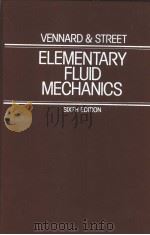
- ELEMENTARY FLUID MECHANICS SIXTH EDITION
- JOHN WILEY & SONS
-
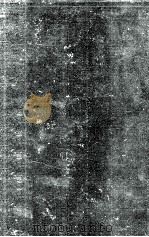
- Elementary FLUID MECHANICS Second Edition
- 1947 JOHN WILEY & SONS
-
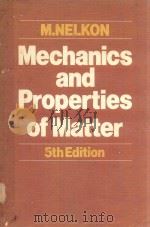
- MECHANICS AND PROPERTIES OF MATTER FIFTH EDITION
- 1978 HEINEMANN EDUCATIONAL BOOKS
-
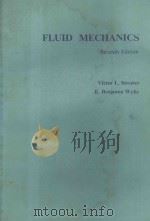
- FLUID MECHANICS SEVENTH EDITION
- 1979 MEGRAW-HILL
-

- ESSENTIALS OF ENGINEERING FLUID MECHANICS SECOND EDITION
- 1966 INTERNATIONAL TEXTBOOK COMPANY
-
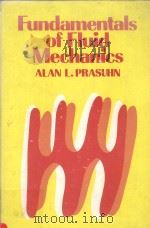
- Fundamentals of fluid mechanics
- 1980 PrenticeHall
-
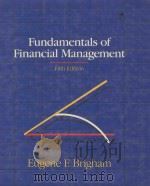
- FUNDAMENTALS OF FINANCIAL MANAGEMENT FIFTH EDITION
- 1989 THE DRYDEN PRESS
-
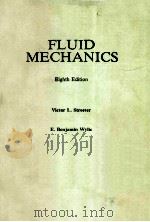
- FLUID MECHANICS EIGHTH EDITION
- 1985 MCGRAW-HILL BOOK COMPANY
-

- FLUID MECHANICS FIRST EDITION
- 1951 VAN CHONG BOOK COMPANY
-
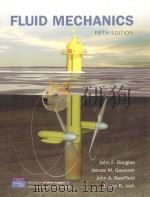
- FLUID MECHANICS FIFTH EDITION
- ADDITIONAL STUDENT SUPPORT AT
-

- FLUID MECHANICS MEASUREMENTS SECOND EDITION
- 1996 TAYLOR AND FRANCIS
-

- FUNDAMENTALS OF MATHEMATICS FIFTH EDITION
- 1991 SAUNDERS COLLEGE PUBLISHING
提示:百度云已更名为百度网盘(百度盘),天翼云盘、微盘下载地址……暂未提供。➥ PDF文字可复制化或转WORD

